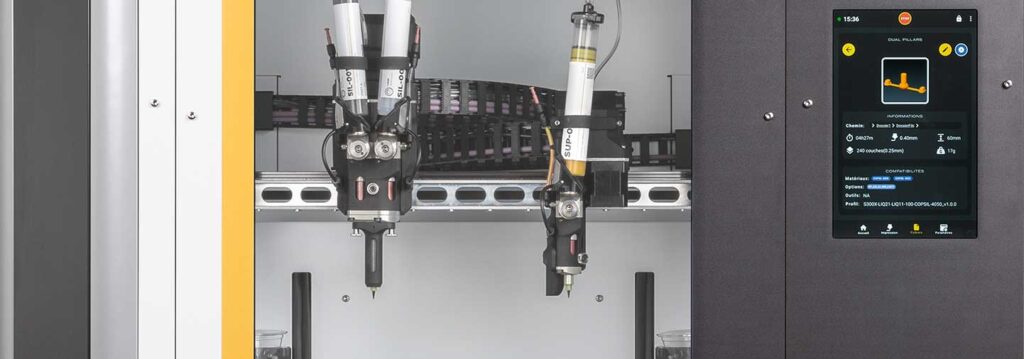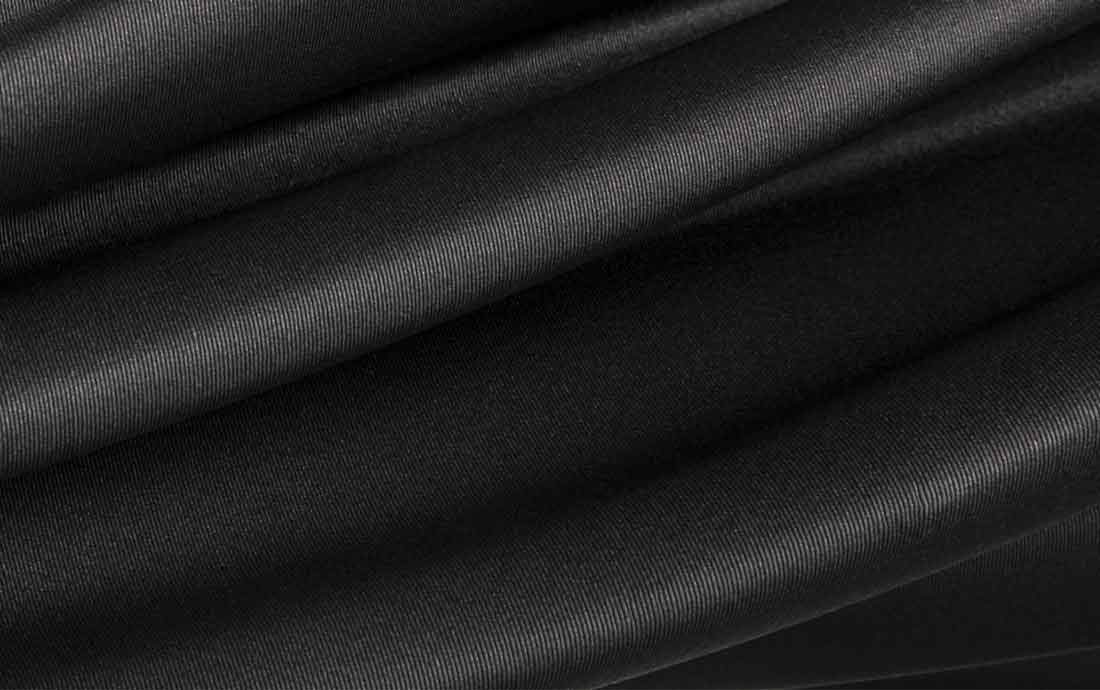FROM CONCEPT TO COMFORT:HOW SILICONE 3D PRINTINGIS CHANGING OSTOMY CARE
More and more individuals are facing intestinal diseases such as inflammatory bowel disease or colon cancer often requiring ostomy surgery—an abdominal opening for waste disposal— and consequently the use of an ostomy bag. Post-surgery complications often arise, especially leakage with ostomy bags.
Addressing this problem head-on, three students from the Master’s in industrial design engineering program at Elisava Barcelona School of Design and Engineering have developed a groundbreaking solution called Odapt—a customized silicone 3D printed disc that prevents leakage in ostomy bags.
Understanding Ostomy Bags: Enhancing Quality of Life
Conditions such as colorectal cancer (10% of all cancer cases, 1.9 million new cases in 2020) Crohn’s disease (approx. 2,3 million people in 2021) and ulcerative colitis (approx. 3 millions people in 2021) often necessitate an ostomy surgery, which can be temporary or permanent. Unfortunately, traditional ostomy bags have not undergone significant design updates since their invention in the 1950s. Consequently, many “ostomates” face challenges such as leaks, lack of attractiveness, skin irritation, and ballooning of the bag.
Leakage is the primary concern associated with ostomy bags, affecting a staggering 99% of ostomates at least once and 50% frequently. The main cause of leaks lies in the lack of adaptability of the wafer—the part of the bag that attaches to the skin—to different types of stomas. Recognizing this critical issue, the Odapt project team embarked on a mission to develop a 3D printed solution that would change that issue.
3D CAD of an Odapt customized wafer
Odapt’s Innovative Approach: Silicone 3D Printing for Improved Comfort
By leveraging 3D printing technology, Odapt introduces a game-changing design. The key component of Odapt is a customized 3D printed disc/wafer made of biocompatible silicone. This disc is tailored to fit each patient’s specific stoma, ensuring a perfect and comfortable seal, thereby eliminating leaks.
To enhance adhesion to the skin, a layer of silicone adhesive is applied. Odapt’s disc is compatible with a wide range of pouches available in the market, providing patients with flexibility and convenience.
Timelapse of the wafer printed by the silicone 3D printer S300X
Lynxter printed a variety of custom silicone wafers from Odapt using the S300X, our 3D silicone printer. This allowed them to test and enhance their solution.
Can you describe the full process behind Odapt service and product?
JN: There are 15 million people worldwide living with an ostomy bag. This is an increasing number specially in younger populations. With Odapt, we are targeting young people with inflammatory bowel disease (Crohn or ulcerative colitis). They have had a very reduced quality of life for months or years, going to the bathroom up to 40 times a day.
They have just had a planned ostomy surgery and now find themselves with an ostomy pouch. They feel they can have a normal life again, they have a desire to live, to go out, to travel and their main problem with the disease is now the leakage of the pouch. They are worried about what people will say and live in fear of the pouch leaking in public.
They are open to trying any new product that can allow them to live better.
With Odapt, we offer a “Do It Yourself” (DIY) option where the user feels empowered to design its own wafer. All the design process, from the image obtained when scanning the patient’s stoma to the criteria used to design the wafer, is fully transparent to the user.
The image acquisition used to create the wafer design is done using a smartphone through a commercial app and can be performed anywhere in the world by the user.
We are willing to approach this segment through social media, partnering with patients advocated/online influencers, to raise awareness about invisible illnesses and our product Odapt. On the other hand, for those who are less into technology, we want to approach them through healthcare institutions where they can be informed about our product and its advantages through a stoma nurse or their usual doctor.
Renders of Odapt showing three customized wafers
Why choose and use silicone 3D printing for your solution?
JN:
Customization: Stoma wafers need to fit the unique contours of an individual’s body to provide a proper seal around the stoma. Silicone 3D printing allows for highly personalized and precise designs, ensuring a better fit and improved comfort for the user.
Biocompatibility: Silicone is a biocompatible material, is well tolerated by the human body and does not cause adverse reactions. This is especially important for a medical device that comes into direct contact with the skin, as with a stoma.
Flexibility and softness: Silicone is known for its flexibility and softness. It can adapt to the body’s shape and move with the wearer, reducing the risk of skin irritation and
improving overall comfort.
Durability: Silicone is a durable material that can withstand repeated use without significant degradation.
Water Resistance: Silicone is water-resistant, which is essential for stoma wafers, as they are exposed to bodily fluids.
Sterilization: Silicone can be sterilized effectively, ensuring the safety of the wafer.
What benefits can you expect?
JN: Using 3D printing technology to create wafers for stomas can bring several benefits for both healthcare providers and patients. Some benefits are the following:
– Customization and patient-specific designs
– Rapid prototyping and iteration
– Cost-effectiveness for customization
– Minimized waste
– Complex geometries
– Accessibility and remote production
What kind of silicone are you using and printing?
JN: We are using biocompatible medical-grade silicone. This is a type of silicone material that is specifically formulated and manufactured to meet the requirements used in medical and healthcare applications. It is designed to ensure safety, biocompatibility, and reliability when being in contact with the human body.
Lynxter used the S300X, our idex silicone 3D printer to print Odapt’s wafer.
What would be the benefits for the patient with silicone 3D printing?
JN: Silicone 3D printing allows us to customize and personalize stoma wafers. Each wafer
can be designed to match perfectly in the unique contours and size of the stoma.
A properly fitting stoma wafer is crucial for preventing leaks and skin irritation. The
customized design made possible by 3D printing can provide an improved seal around the stoma, reducing the risk of leaks.
“With these changes we are improving the quality of life of the user, giving them more confidence and a peace of mind in their mental health.”
What change do you expect in medicine with Odapt?
JN: Odapt wafer was created to be flexible and adaptable with biocompatible silicone, combined with 3D printing precision, that could lead to better seals around the stoma, reducing the risk of leaks and providing a more secure attachment. With these changes we are improving the quality of life of the user, giving them more confidence and a peace of mind in their mental health.
With this solution Odapt provides better comfort, fit, and durability of the wafer, users may experience fewer leaks and irritation, potentially reducing hospital stays and healthcare costs.
The Odapt team aims to inspire other designers and healthcare professionals to see the benefits of 3D printing and the use of biocompatible silicone in medical field.
3D printing details:
| SECTOR | Medical – Ostomy surgery |
| APPLICATION | Wafer Ostomy Bag |
| MATERIALS | Silicone COPSIL4025 |
| DIMENSIONS | Custom made depending on the patient.Ex: 113 mm x 99 mm x 8,5 mm |
| PRINTING TECHNOLOGY/td> | S300X with LIQ21 |
| PRINTING TIME | 35 min / part |
| MATERIAL QUANTITY | 8 gr |
| LAYER HEIGHT | 0.28 mm |
| NOZZLE SIZE | 0.56 mm |
Jessica Nissen, Ivana Llobet and Patricia López, co-founders of Odapt
The Journey of Odapt: From Innovation to the Future
Odapt is the result of the visionary work by Jessica Nissen, Patricia López, and Ivana Llobet (from the Master’s in industrial design engineering program at Elisava Barcelona School of Design and Engineering).
Their project began by recognizing the outdated design of traditional ostomy bags and the need for a solution that addresses the issue of leakage.
The team embarked on an extensive research journey, conducting interviews with patients, healthcare professionals, and workshops on user experience. This hands-on approach allowed them to gain invaluable insights into the challenges faced by ostomy patients. Drawing upon their diverse backgrounds, including expertise in modeling, design, 3D printing, and biomedical engineering, the team developed Odapt—a product expected to significantly improve the lives of ostomy patients.
The success of Odapt has garnered recognition and support. As finalists and winners of the People’s Choice Award in the Forward AM Innovation Award, the team secured €25,000 in capital. Collaborating with the Iam3DHub team of engineers, the Odapt project continues to evolve and innovate. Their efforts have attracted interest from potential users willing to contribute to the project’s development.
Odapt’s journey includes nominations for prestigious awards such as the Elisava Master Awards 2023 and James Dyson’s Award 2022. The project has also been showcased at Formnext 2022, Europe’s largest 3D printing fair, solidifying its position as a pioneering solution in the field of 3D Printing and ostomy care.
Sources :
WHO world health organization
ODAPT




